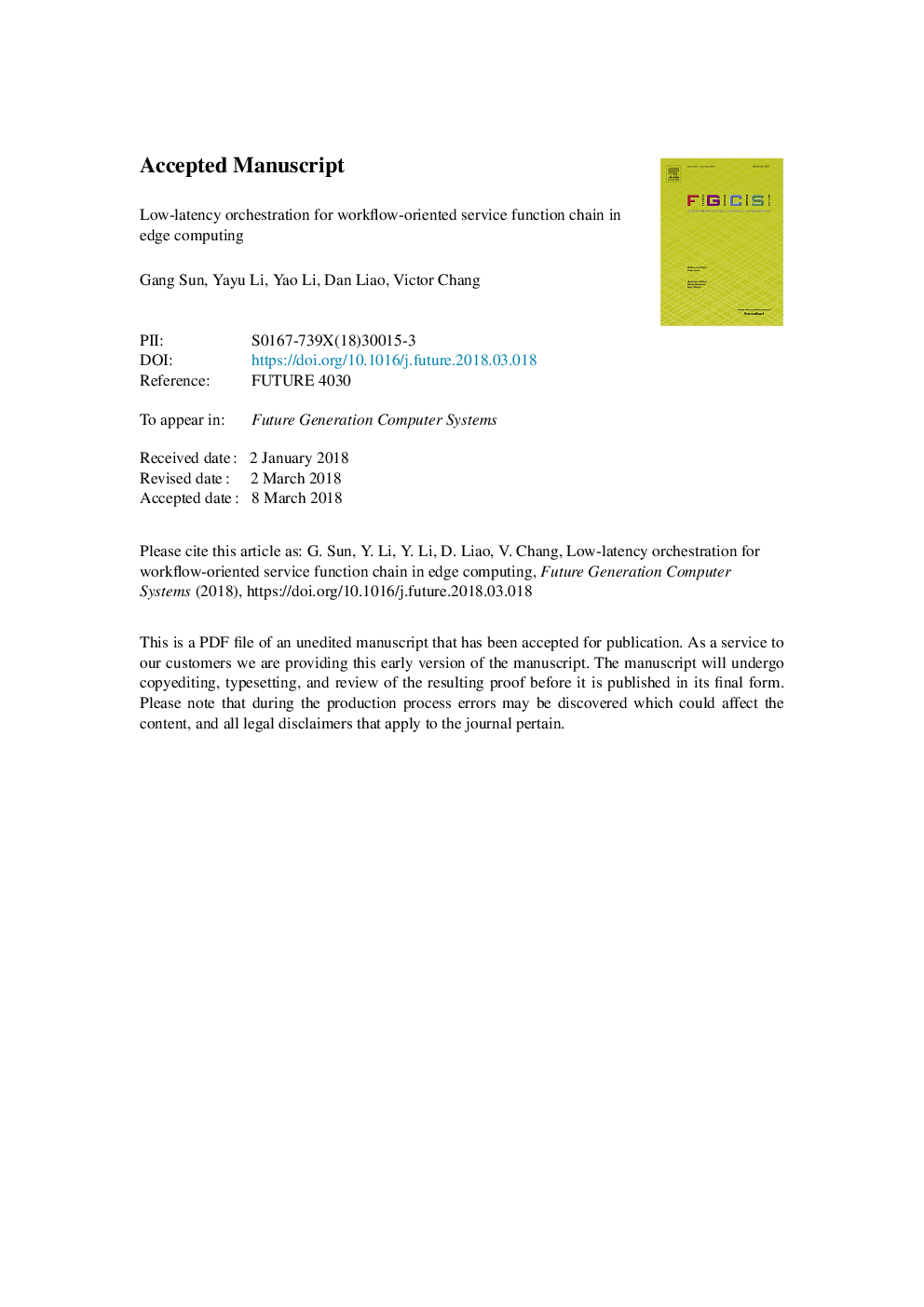ترجمه فارسی عنوان مقاله
ارکستراسیون کمینه زمان بندی برای زنجیره عملکرد سرویس گرا در محاسبات لبه
عنوان انگلیسی
Low-latency orchestration for workflow-oriented service function chain in edge computing
| کد مقاله | سال انتشار | تعداد صفحات مقاله انگلیسی |
|---|---|---|
| 108314 | 2018 | 18 صفحه PDF |
منبع

Publisher : Elsevier - Science Direct (الزویر - ساینس دایرکت)
Journal : Future Generation Computer Systems, Volume 85, August 2018, Pages 116-128
ترجمه کلمات کلیدی
مجازی سازی عملکرد شبکه، گردش کار، درخواست سرویس شبکه، تاخیر، محاسبات لبه،
کلمات کلیدی انگلیسی
Network function virtualization; Workflow; Network service request; Latency; Edge computing;

